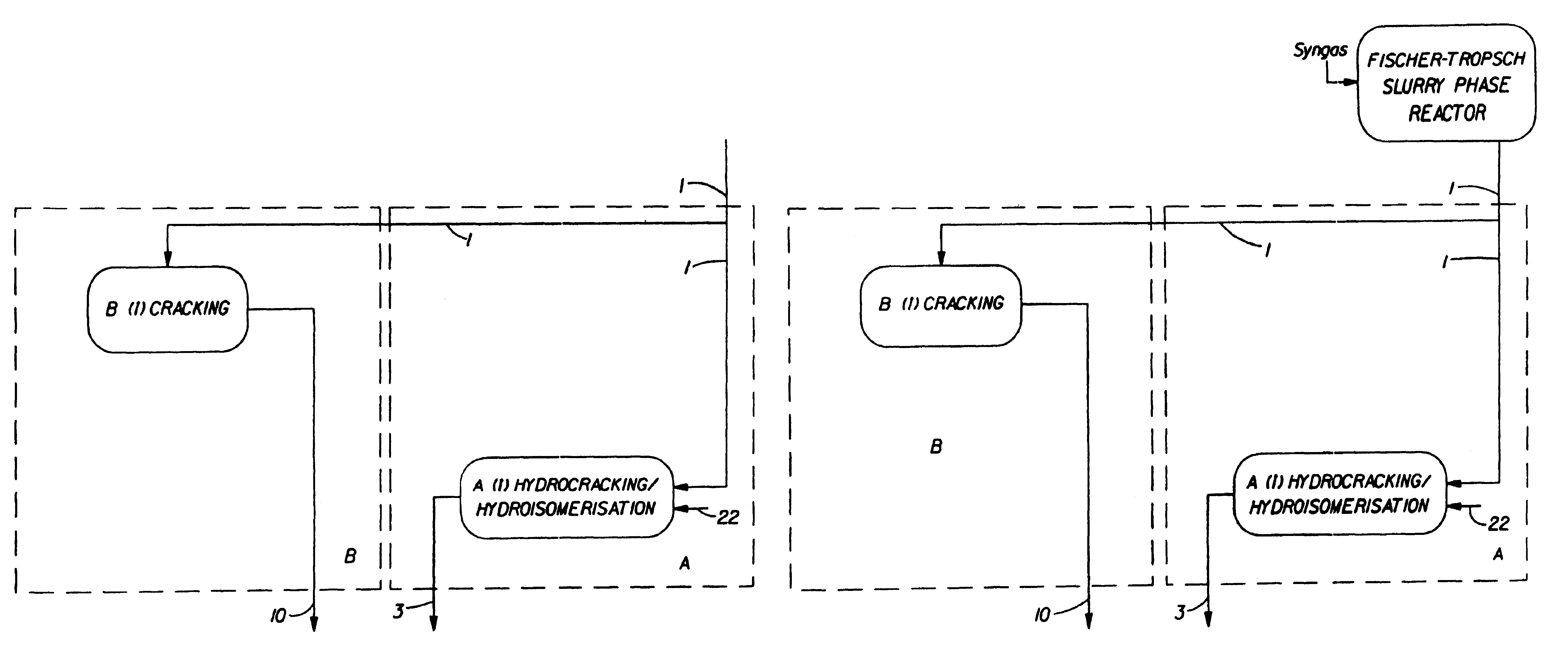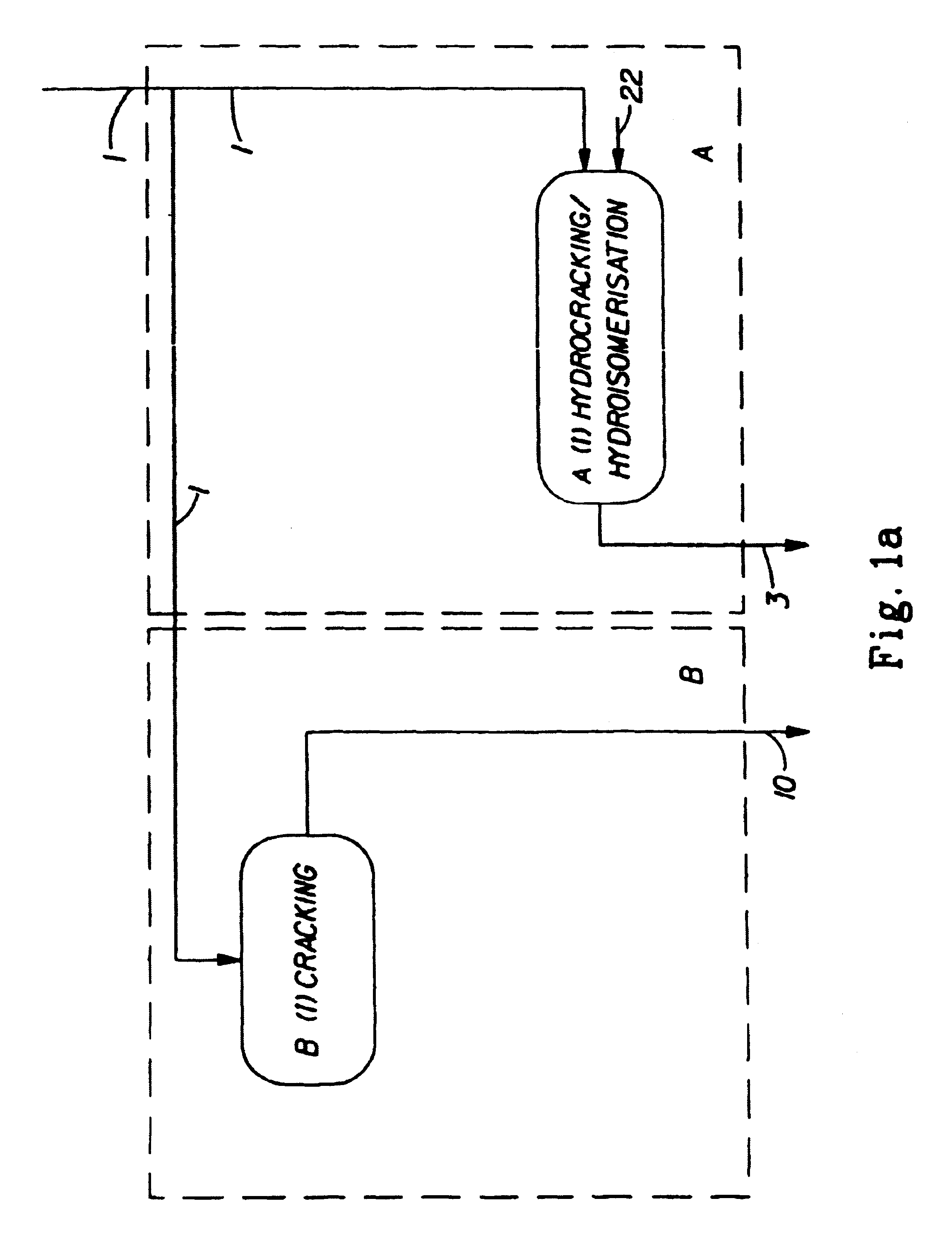Synthetic jet fuel and diesel fuel compositions and processes
a jet fuel and composition technology, applied in the field of synthetic and/or highly refined jet fuels and synthetic and/or highly refined diesel fuels, can solve the problems of insufficient fuel-desirable technical attributes, substantial unsolved technical problems, and intrinsically producing too low a level of useful additives
- Summary
- Abstract
- Description
- Claims
- Application Information
AI Technical Summary
Benefits of technology
Problems solved by technology
Method used
Image
Examples
synthesis examples
Example 1
Acetate Ester is Made by a Base Catalyzed Transesterification of a Branched, Fatty Alcohol with Ethyl Acetate.
[0248]Add 150 g (0.60 mol) of C16-C17 mid-chain branched alcohol of the present invention, 1-L ethyl acetate, and 13 g (0.06 mol) of 25% sodium methoxide in methanol. Let stir at room temperature overnight (17-19 hrs). Removed ethyl acetate by reduced pressure rotary evaporation. Add 1-L fresh ethyl acetate and 13 g additional 25% sodium methoxide. Let stir overnight again as described above to allow reaction to complete. Acetate ester of the C16-C17 mid-chain branched alcohol of the present invention is obtained.
example 2
Alcohol Ethoxylate is Made by Mixing a Branched, Fatty Alcohol with Ethylene Oxide Gas in the Presence of Sodium Metal.
[0249]Add 350 g (1.40 mol) of C16-C17 mid-chain branched alcohol of the present invention and heat alcohol to 90° C. under a nitrogen blanket. Add 1.62 g (0.07 mol) of sodium metal. Continue heating to 130° C. and cease nitrogen flow and add the ethylene oxide gas to the alcohol / sodium metal mixture while stirring. Alcohol ethoxylate of the C16-C17 mid-chain branched alcohol of the present invention is obtained.
example 3
Branched Alcohol Ester is Made by Mixing a Branched, Fatty Alcohol with Ethyl Acetate via a Base Catalyzed Transesterification
[0250]Add 150 g (0.60 mol) of C14-C15 mid-chain branched alcohol of the present invention, 1-L ethyl acetate, and 13 g (0.06 mol) of 25% sodium methoxide in methanol. Let stir at room temperature overnight (17-19 hrs). Removed ethyl acetate by reduced pressure rotary evaporation. Add 1-L fresh ethyl acetate and 13 g additional 25% sodium methoxide. Let stir overnight again as described above to allow reaction to complete. Acetate ester of Neodol 45 alcohol is obtained. The carboxylic acid may be selected from the group consisting of: mono-, di-, tri-or tetra-carboxylic acids and mixtures thereof. The carboxylic acid may be selected from the group consisting of: succinic acid, citric acid, adipic acid, lactic acid, tartaric acid, phthallic acid, malic acid, maleic acid, glutaric acid, phosphoric acid, phosphorous acid, butane-1,2,3,4-tetracarboxylic acid, sali...
PUM
| Property | Measurement | Unit |
|---|---|---|
| pour point APPR | aaaaa | aaaaa |
| temperatures | aaaaa | aaaaa |
| pour point | aaaaa | aaaaa |
Abstract
Description
Claims
Application Information
 Login to View More
Login to View More - R&D
- Intellectual Property
- Life Sciences
- Materials
- Tech Scout
- Unparalleled Data Quality
- Higher Quality Content
- 60% Fewer Hallucinations
Browse by: Latest US Patents, China's latest patents, Technical Efficacy Thesaurus, Application Domain, Technology Topic, Popular Technical Reports.
© 2025 PatSnap. All rights reserved.Legal|Privacy policy|Modern Slavery Act Transparency Statement|Sitemap|About US| Contact US: help@patsnap.com



